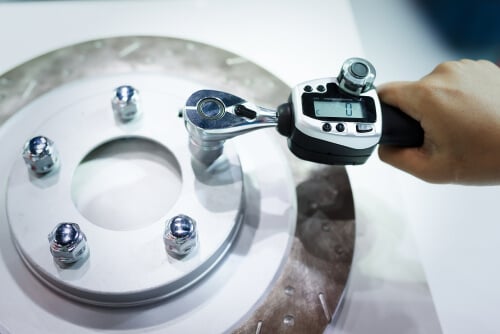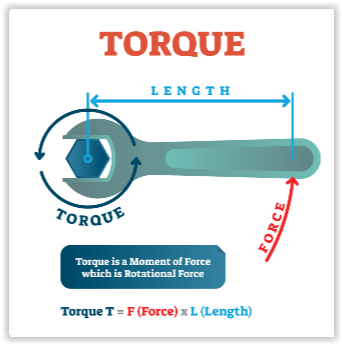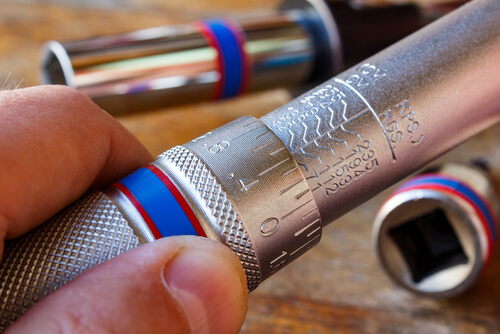
Reading Time: 4 minutes
If you’ve been around during discussions about cars, you have probably heard people talk about torque, displacement, horsepower and how long it takes to go from 0 to 62 miles per hour. Throwing around terms like torque and horsepower sounds impressive to those who don’t follow auto industry trends or understand what it really means.
Torque vs Horsepower in Cars
Interestingly, many people actually use these terms – horsepower and torque – interchangeably, which is incorrect. Oversimplified, horsepower and torque could be considered similar, yet different.
Torque in cars – what does it mean? When you turn the key in the ignition and press on the accelerator, the engine produces horsepower and torque. Fuel and air is ignited into the combustion chambers, causing the drive axles, transmission and crankshaft to twist. The potential energy in fuel is converted into kinetic energy, which enables you to drive.
These important statistics help you understand the performance of the vehicle. That said, many people misunderstand torque. In this post, we’ll discuss what torque is, how it is measured and what makes it so important. What’s better, a car with more torque or more horsepower? Is torque important in cars?

So, what is power vs torque in cars?
The definition of torque is turning power. This is your vehicle’s capacity to do work. In other words, it is the force needed to turn a wrench. Imagine you have 300 pound-feet of torque and a 1-foot long wrench to which you apply 300 pounds of force directly perpendicular to the wrench. As such, you would get 300 pound feet of torque.
Understanding the concept of work as related to the automotive industry is key to understanding torque in cars. The scientific definition of work relates to force. When an object pulls or pushes against another, it might move. For a car to move (work), the engine has to apply more force than resistance to the moving wheels. The scientific equation of force is expressed as such:
Work = D (distance moved) x F (force applied)
Work is a vector force that is always calculated as movement against a plane.

Importance of Torque in Cars
Torque is used to make a car accelerate. The flywheel and crankshaft rotate around the axis. We use torque to measure non-vector force. It is not an engine that produces smoking tires, but rather the twisting force of the drive shaft, transmission and crankshaft. Torque affects the performance of a vehicle.
When manufacturers list figures for a vehicle, they will typically quote the maximum torque of the internal-combustion engine at the crankshaft. The torque at the crankshaft will usually be higher than at the wheels.
Since torque allows vehicles to accelerate faster during the initial stages, a car with more torque will typically have a faster 0-62 mile per hour time.
But torque is about more than just speed, especially on larger, heavier vehicles. An SUV needs more torque to get moving and to continue cruising. That’s why most larger vehicles use diesel-powered torquey engines. Diesel or v-configured engines usually produce lower revs and more torque than petrol engines. Torque enables cars to move more easily at lower revolutions, which makes for a smoother drive.
Torque vs. Horsepower
Torque should not be confused with horsepower, as they are separate, yet prominent statistics. While torque is the ability of the vehicle to perform work (or, the twisting force of the crankshaft), horsepower is the speed at which the vehicle can do this.
Lightweight sports cars with high revs per minute tend to have high horsepower and low torque. In other words, a small amount of force is applied at a fast rate. Large vehicles, such as buses, tractors and trucks usually have lower horsepower with a very high torque. These vehicles must be able to perform a lot of work, but not particularly fast.
Calculating Torque in Cars
It’s a given that torque and horsepower are mathematically tied. As such, you can easily work out the horsepower if you know the torque and rpm.
(RPM * T) / 5252=HP, where RPM is the engine speed, T is the torque, and 5,252 is radians per second. The first calculation you want to do is multiply the torque and the engine speed. For example, a Porsche generates 480 of torque at 2,500RPM. (Wikihow)
An engine can only be spun so fast, so a higher torque will allow for more horsepower at lower rpms. Low-end torque delivers more power at slower speeds. Rpms will affect horsepower and torque. That’s why car shipping carriers have higher torque that enable them to haul trailers. Horsepower is more important if your goal is speed.
Torque in Summary

The issue of horsepower vs torque is complex and highly technical. However, it is helpful to understand these two closely related yet very different topics.
While some less clued-up car enthusiasts might argue that torque or horsepower is more important, it is an erroneous argument. It also goes to show that they don’t really understand the relationship between horsepower and torque.
Torque is important. It enables the engine to function and to produce horsepower. Torque is twisting force, which keep the wheels of your vehicle turning. However, if you want to impress your friends or race around the track, you should consider both horsepower and torque.
No matter what kind of car you drive, Nationwide Auto Transportation can ship your vehicle when you don’t want to hit the long road alone. We work with a number of shippers from around the country. We offer both enclosed and open car shipping services so that you can choose which suits you the best.



